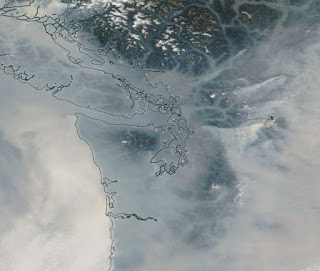At SeaTac Airport, we are down about 2 inches from normal for the last 12 weeks (see below)
And looking at the precipitation anomaly (difference from normal) over the past 90 days for WA state shows near normal precipitation over the Columbia Basin, but a dry western Washington, with the windward slopes of the Cascades being roughly 3-5 inches below normal.
And looking at the precipitation anomaly (difference from normal) over the past 90 days for WA state shows near normal precipitation over the Columbia Basin, but a dry western Washington, with the windward slopes of the Cascades being roughly 3-5 inches below normal.
To get some historical perspective, here is the May to July precipitation for Washington State since 1930. This year was not a record low, but was one of the driest years during that period. Overall, there has not been much a long-term trend in early summer precipitation, but we have had a drier than normal spell the last few years.
The good news is that the models are showing the return of light rain to our area.
For example, here is the forecast cumulative precipitation through next Friday using the UW WRF model. Decent rain in British Columbia, which is very good--can help dampen down the fires. And western Washington gets moistened, particularly the western side of the Cascades.
Regarding the holiday weekend, it should be dry through Sunday night, but then a upper level trough moves in. So expect some light showers Monday AM that will be over by noon.
And then on Thursday a potent upper trough approaches (see below)...expect substantial cloudiness and some rain later on Thursday into Friday. In short, normal conditions are back. Heat waves and smoke are in our rear-view mirror.





























































